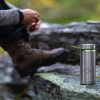Weekly News Roundup 27/08/23
- News
- August 27, 2023

A nuclear attack, as opposed to a nuclear meltdown, is the explosion detonated by a nuclear device when it either explodes in the air (air-burst) or hits the ground (ground-burst). Nuclear weapons can come in all shapes and sizes, and they range from small bombs capable of being carried in the back of a van to large hydrogen bombs that can be dropped from planes.
There are even ballistic missiles tipped with nuclear warheads which can be fired long-distances internationally from one nation to another.
The difference between a regular TNT bomb and a nuclear bomb is the fact it uses a specialised nuclear reaction to create the explosion, and the energy released from this is enormous and massively destructive. There are a few different types of nuclear weapon: fission bombs, thermonuclear bombs and dirty bombs.
Fission bombs: Usually measured in kilotons (KT), fission bombs are also known as atomic bombs and release a huge amount of energy by the act of splitting the atoms of elements like uranium or plutonium. These were the bombs dropped on Hiroshima and Nagasaki in 1945 and caused widespread destruction and death.
Fusion bombs: Measured in megatons (MT), fusion bombs are also called thermonuclear bombs, Neutron bombs or Hydrogen bombs. These work by nuclear fusion, where heavier nuclei are created from lighter ones, such as tritium and deuterium. Highly destructive bombs like this have never been used in war and have the potential to reduce entire cities to rubble.
Dirty bombs: This type of bomb is a radiological weapon where the actual explosion is not the main means of attack. The effect of a dirty bomb is to create large amounts of radioactive material to poison and injure humans or the environment, and it can leave an area contaminated for years to come. They can be made of plutonium, uranium, radium or caesium.
Nuclear explosions create huge amounts of blast damage which destroy buildings in a certain radius, but they also send out powerful shockwaves which can cause an EMP and devastate anything electrical.
There is also the heat blast that comes from the detonation of an atomic bomb which can cause fatal burns to anyone within the radius. Radiation is also released and contaminates particles in the immediate area which fall back down to earth, known as nuclear fallout, decreasing survival rates massively.
Nuclear weapons are classified according to their destructive power in tons of TNT (trinitrotoluene), which is called the yield.

The probability of nuclear war in Britain are quite slim, this is because we have our own nuclear weapons that could be used in retaliation against any enemy. Due to the power of such weapons of mass destruction, any nation wishing to drop a nuke on us is guaranteed to receive an equally devastating blow to its own major cities in return – this is called mutually assured destruction.
So from a military standpoint, these types of weapons are actually classed as a nuclear deterrent, meaning the very fact that we possess nuclear weapons deters other nations from using them against us in the first place, enhancing our survival as a nation.
Add to this the fact that the closest ally of Britain is America, with whom we have a ‘special relationship’, and is one of the world’s strongest military nations. If anybody decides to drop a nuke on us, we can rest assured America will rain down their own SHTF nuclear arsenal on our adversaries with devastating consequences.
Whilst Britain has many nuclear weapons of its own to launch a strong and effective counterstrike against any nation – the ability to hit more than 100 major cities or towns with nuclear strikes – America on the other hand has the capability to wipe any country off the map completely… and every world leader knows this.
Other allies of the UK with nuclear capabilities include France and Israel, reducing the probability of nuclear warfare against the nation.
The probability of a nuclear war is always there in the background, but just about every country understands that there would be mass loss of life, in the order of millions of people, should nuclear warfare be declared. Britain is a relatively small nation compared to America, Russia and China, both in geographical size and population, but is a key player in world affairs which could make it a target during an all-out nuclear war.
Although the chances of a nuclear missile being fired at the UK are small, it does remain a possibility if international diplomacy breaks down and a world war breaks out. For this reason it is not an over reaction of survivalists to be prepping for a nuclear attack in Britain, and there is lots of helpful advice in this survival guide to ensure you stay safe by appropriate prepping.
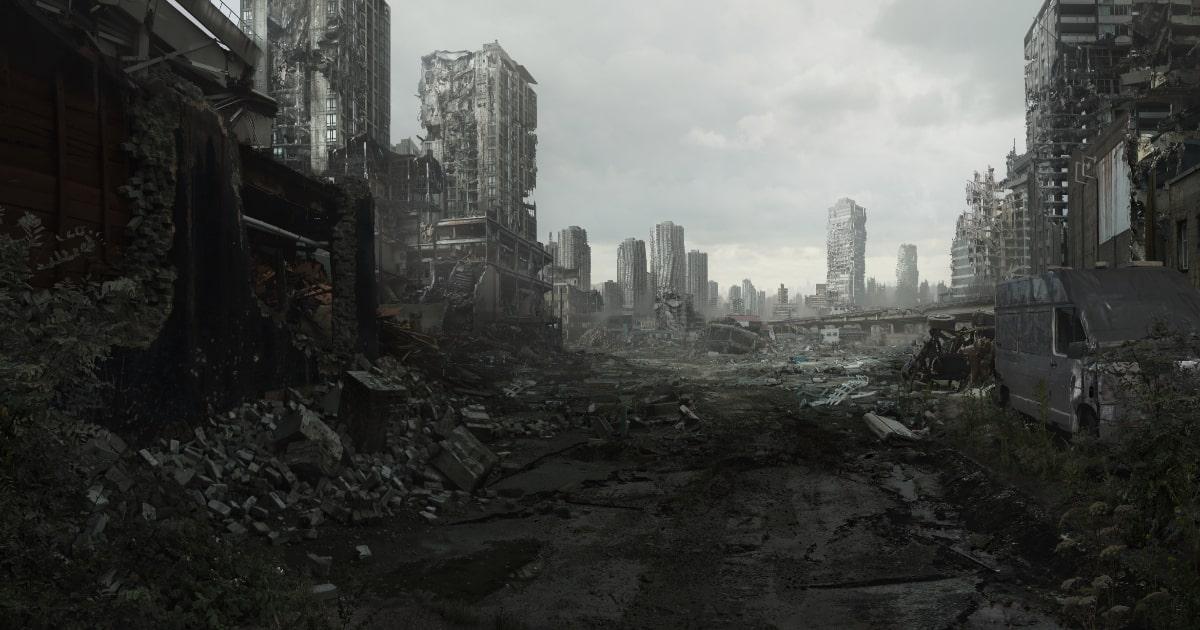
A SHTF nuclear attack on Britain has the potential to be severe due to a number of reasons. The first reason is that we are effectively a small island crammed with nearly 70 million people, the size of the UK is only as big as one US state such as Wyoming or Oregon.
So it’s not only big population areas that would be affected, as fallout could spread across the whole nation in a matter of hours from multiple strikes as most nuclear attack simulations show. A large nuclear attack on London with a southernly wind blowing would shower the entire country in fallout.
Another reason is that Britain has a lot of its population living in a handful of major cities, so any nuclear attack on London or a big city would always result in a large amount of casualties in the hundreds of thousands.
For example, if we look at the top 10 most populated cities in the UK (London, Birmingham, Glasgow, Liverpool, Bristol, Manchester, Sheffield, Leeds, Edinburgh and Leicester) that makes up 14 million people who would be either killed, seriously injured or receive huge amounts of radiation if a simultaneous nuclear attack were to take place on just those 10 locations at the same time.
Check out the nuclear attack simulation below on the top most populated cities if Britain was attacked with 50MT nuclear weapons, the biggest nuclear bombs tested by Russia.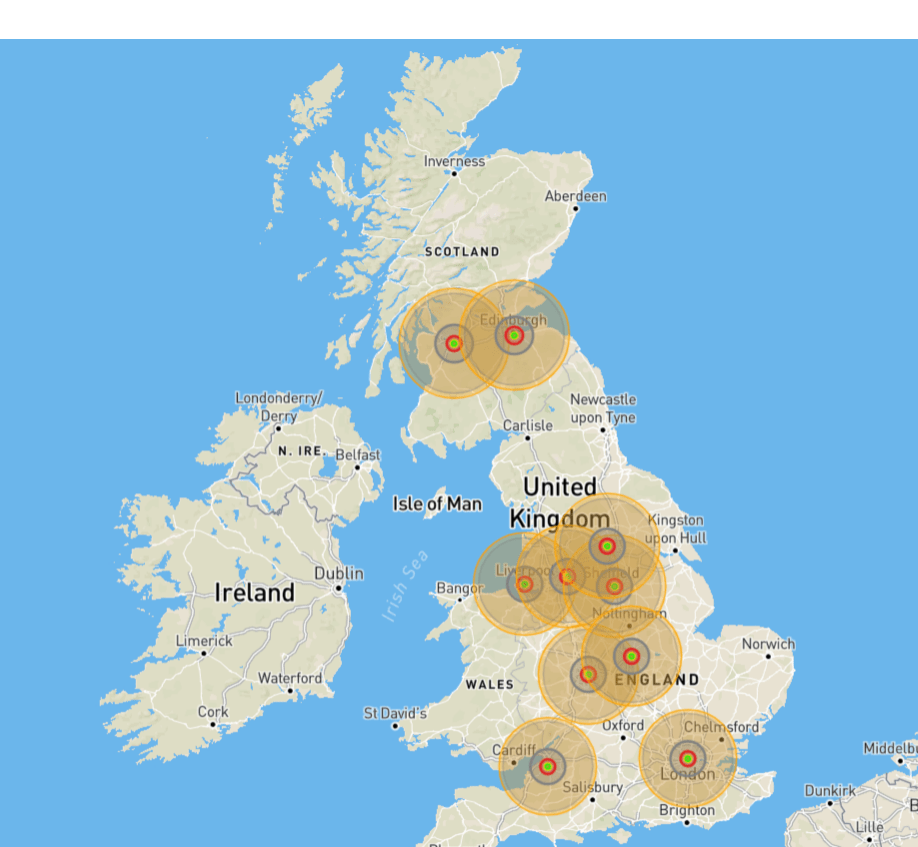
The smaller blue circle represents every building being destroyed within a 12 mile radius of the centre of the explosion, the large orange circle is everyone caught outside in a 40 mile radius of the blast receiving instant and severe 3rd degree burns.
More people live in London and the Greater London area than everyone in Scotland and Wales combined, so a nuclear attack on London and surrounding areas would be the most devastating manmade SHTF scenario Britain could suffer in terms of human suffering.
Also, as you can see, the geographical locations of these top 10 cities stretch from the south to the north, so just imagine the deadly radioactive fallout on the millions of people who live close to them in addition to the widespread damage.
Towns in the vicinity of these areas would also receive lethal amounts of radiation and damage from the initial blast wave. Think of all the people that live in and around those places such as York, Doncaster, Bolton, Bath, Cardiff, Oxford, Luton, Portsmouth, Coventry and Nottingham. Northern Ireland may get off lightly unless Belfast receives a direct hit too.
Click here to see a simulation of what would happen if a bomb dropped on your nearest town or city.
Most of our national parks and areas of outstanding natural beauty (AONB) would be severely affected such as the Yorkshire Dales, the Peak District, the Lake District, the Cotswolds, the Brecon Beacons, Loch Lomond & The Trossachs and the Cairngorms.
All of these could expect to receive a showering of radioactive fallout in that scenario, killing plant and animal life as well as poisoning vital drinking water supplies for a generation.
Transport infrastructure would be decimated if the kind of multiple nuclear attack described above was to take place. Railway lines would be devastated by a nuclear attack on London, both the overground and the underground tube system, as would the TransPennine Express, Midland Main Line, West Coast Main Line and Grand Central Main Line to name just a few.
Travelling by car around the country would be made extremely difficult too as major British motorways A1, A6, M1, M4, M5, M8, M62 as well as the M25 ring road would all be put out of use. Chaos would reign as even the logistics of dealing with the after effects of a SHTF nuclear attack would be hampered significantly.
Another scenario would involve a few select attacks targeting nuclear power plants in the UK which would cause wide-reaching effects, the same as Chernobyl and Fukushima. Britain currently has eight nuclear stations in operation, all on the coastline, and they are located in England, Scotland and Wales.
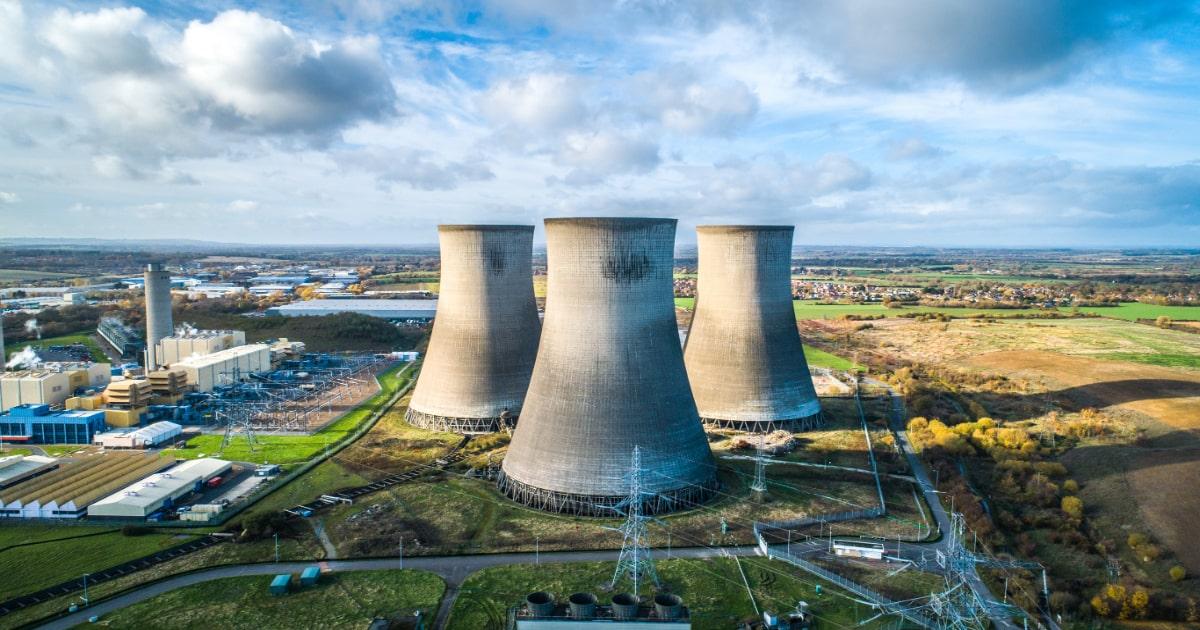
Even a small nuclear attack on just two or three of these facilities would severely damage Britain, and make large swathes of the country uninhabitable for decades, displace millions of people and allow radioactive nuclear material to leak into the Irish Sea, the North Sea and the English Channel.
If they were caused to meltdown due to an attack, there would be at least a 20 mile exclusion zone around the area where radiation would be deadly, but up to 90,000 square miles around could possibly be contaminated for years, depending on the direction of the wind at the time. When prepping, you need to take all of these different SHTF scenarios into account and plan accordingly.
Thankfully for preppers worried about a nuclear attack, of the 195 countries in the world only 9 of them have nuclear weapons: United States, United Kingdom, Russia, China, France, India, Pakistan, North Korea and Israel. During the Cold War stockpiles of weapons surged to over 60,000 but now have been cut back greatly as the threat diminished.
In this section we’ll take a closer look at the extent of the 3,750 total nuclear weapons which are currently deployed, and the capabilities of these nine nations, in order of who first acquired and tested them.
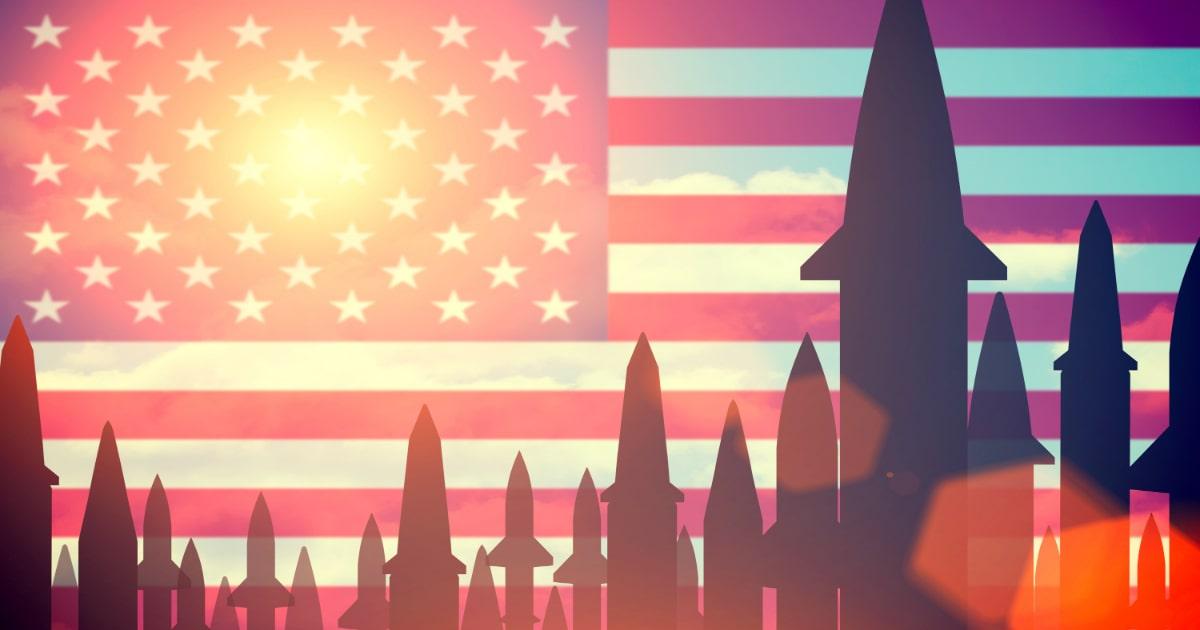
The USA is one of the superpowers when it comes to nuclear weapons, holding approximately half of all the nuclear weapons in the world – 5,550 in total of which 1,700 are actually deployed. Having first tested its weapons in 1945 in New Mexico, the country has since conducted over 1000 nuclear tests.
The USA is the only country to have used a nuclear weapon in war, against Hiroshima and Nagasaki in Japan in retaliation for the attack on Pearl Harbour. These two atomic bombs killed an estimated 150,000 people. Only the President of the United States can give the order to launch a nuclear attack against a country.
America has a nuclear triad, meaning that they have the potential to launch nuclear missiles from bases on the ground, by dropping them from planes or launched from nuclear attack submarines at sea.
Land-based: 400 intercontinental ballistic missiles, each has approximately 350KT–475KT
Air-based: 46 x B-52 bomber planes and 20 x B-2 bomber planes carrying bombs up to 340KT each
Sea-based: 14 submarines with 90 warheads each, either 90KT or 475KT

Shortly after America demonstrated its nuclear ability, Russia followed suit and tested their devices in 1949 in Kazakhstan. Like America, Russia possesses a large amount of nuclear weapons, with 1,600 deployed and around 6,250 in total.
Russia has tested the largest nuclear hydrogen bomb in the world, the Tsar Bomba or ‘King of Bombs’, which although was tested at 50MT it was actually capable of delivering up to 100MT. This massive bomb was dropped and it destroyed everything in a 22 mile radius, caused third-degree burns 62 miles away from ground zero, and glass windows still shattered at 480 miles away from the explosion.
The President of Russia, the Minister of Defence and the Chief of the General Staff can communicate in the event of war and take the decision to use nuclear weapons. Russia too boasts a nuclear triad, and is capable of launching a strike from a nuclear attack submarine, from a bomber plane, or from the ground via missile silos with ICBMs equipped with warheads.
Land-based: 310 ballistic missiles with up to 300KT – 800KT warheads on each, mobile and silo
Air-based: 16 x Tu-160, 55 x Tu-95, 60 x Tu-M22 bombers with 200 warheads of 200KT – 300KT each
Sea-based: 620 warheads with 100KT – 160KT each on 11 submarines

The third country to develop nuclear weapons, after first testing in 1952 in Australia with a weapon called Hurricane. It was developed in British universities with the assistance of Austrian and German scientists who had left Germany during the war. The UK was helped by America to develop its nuclear capability, the Manhattan Project, but went it alone after 1945 as the USA became more secretive.
Over the years, Britain has created nine types of nuclear weapon, and in the late 70s it had around 500 nuclear warheads in total. Now it has approximately 225, of which 120 are in operation and ready to launch in case of war. The Prime Minister ultimately has say of whether nuclear weapons can be fired or not, but theoretically the Queen could order a nuclear strike herself!
In case of a massive nuclear strike on the UK in which the country is totally devastated, the decision to launch the weapons is given to the commander of the nuclear submarine via the letters of last resort.
Britain used to have both air and sea nuclear capabilities, however in 1998 the WE-177 bomber plane was retired, so now the entirety of its nuclear forces are sea-based. It is called Trident and it provides a continuous at sea deterrence, meaning the locations of all its nuclear attack submarines are unknown at any time and are always at sea ready to fire their warheads.
The UK recently voted to renew its nuclear deterrent in 2016 at a cost of £31bn, and Dreadnought class submarines will replace the current models, staying in service until at least 2060.
Sea-based: 4 x Vanguard submarines, each carrying 16 missiles of up to 455KT – 475KT.

France first tested its nuclear arsenal in 1960 in French Algeria, and now possesses 280 deployed warheads. Over the years it has conducted 210 nuclear tests in places such as French Polynesia, and has reduced the number of weapons it has from 540 to just 290 after the Cold War.
French Presidents Chirac and Hollande have both stated that any attack against France with a weapon of mass destruction would be met with a similar show of force, and a counterattack would take place. The decision to launch a pre-emptive nuclear strike or an attack in retaliation lies with the President of the country at the time.
France used to have a nuclear triad of land, sea and air nuclear defence, but in 1996 it closed down the silos at Plateau d’Albion so now only retains sea and air capabilities. Like Britain, France also boasts a continuous at sea deterrence and has a second-strike capability.
Air-based: 40 x Rafale BF3 and 10 x Rafale MF3 bombers carrying one 300KT warhead each
Sea-based: 32 x M51.1 and 16 x M51.2 submarines with 240 warheads, each 100KT
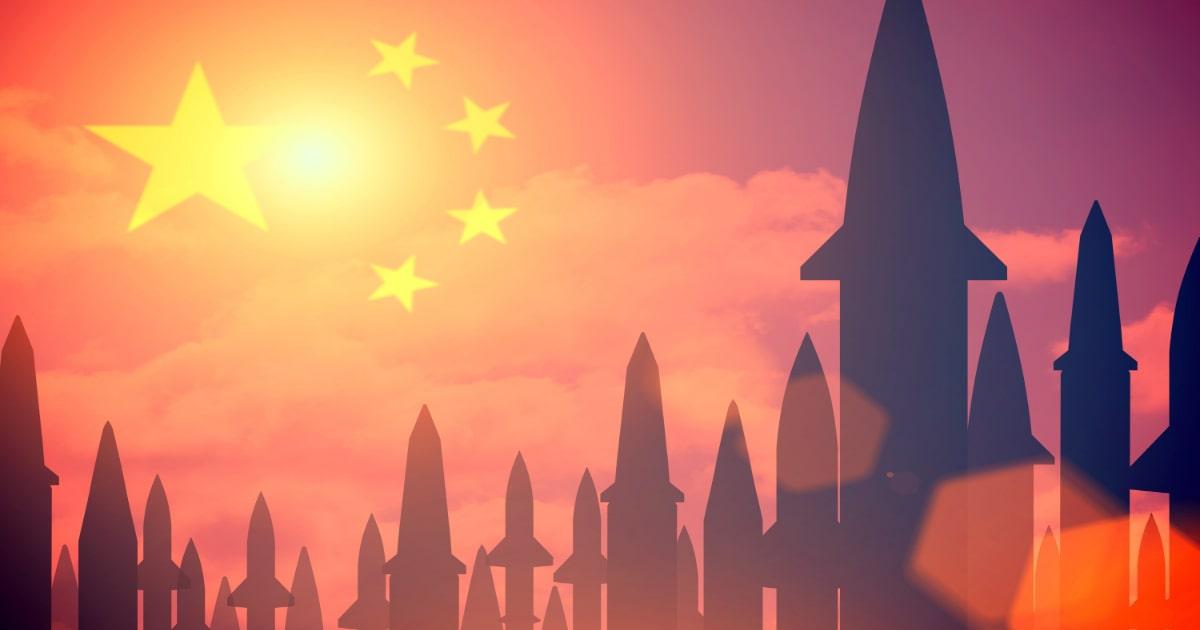
Having conducted 44 nuclear tests since the first Xinjiang test in 1964, China is a world superpower with around 350 nuclear weapons of mass destruction. It’s only about a fifth of the amount of nukes America or Russia possess, but nonetheless China presents a significant military threat.
It is suspected that China’s President holds the ability to order a nuclear weapon to be deployed, but it may also be approved by an 11 member team at the Central Military Commission. Since China was able to create nuclear weapons it has held a No First Use strategy, meaning it will never be the first one to launch such an attack, giving it a strong deterrent via the use of mutual assured destruction.
Like many of the ways it operates on the international stage, the exact nature of China’s nuclear ability is not known, but it is expected to hold a nuclear triad, capable of launching a pre-emptive nuclear strike from the air, from land or from the sea.
Land-based: 240 x DF-5 and DF-26 missiles with maximum 5MT – 10MT yields
Air-based: 120 x Xian H-6 and 69 x JH-7 with approximately 20 x 3MT thermonuclear gravity bombs
Sea-based: 4 x Jin-class submarines carrying 12 x JL-2 missiles each with a 1MT yield
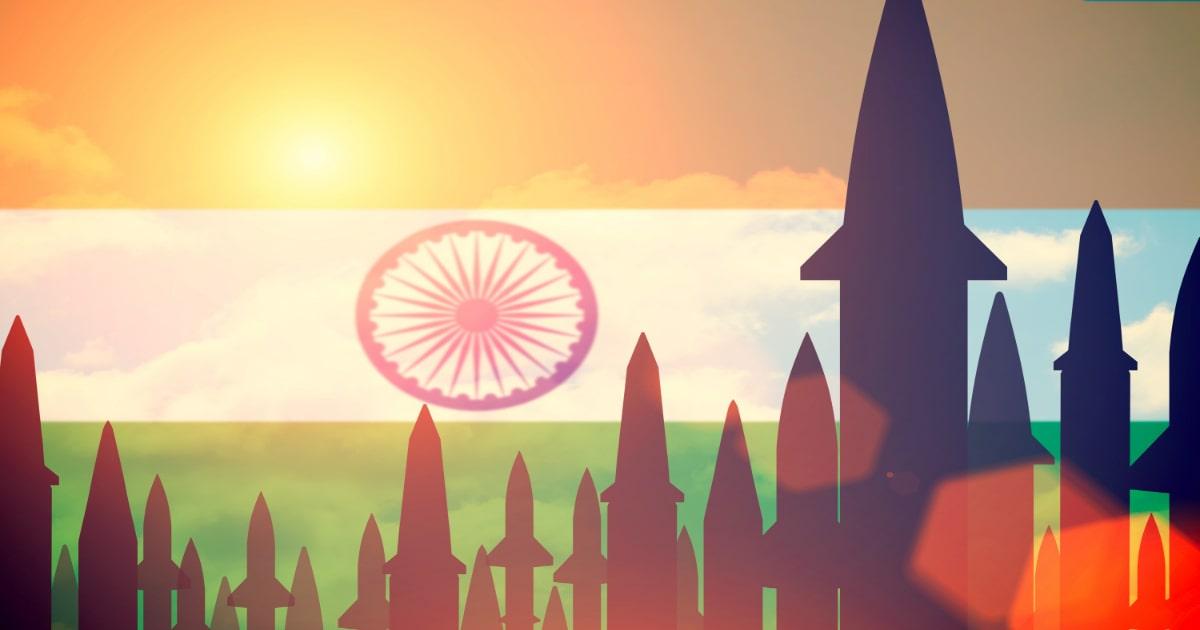
The exact size of India’s nuclear capability is unknown, and since testing its first nuclear weapon in 1974 in Rajasthan it has amassed approximately 150 warheads and conducted 6 tests. Like China, India does have a No First Use policy in place, meaning it won’t use its nuclear arsenal unless another country strikes them first, however it remains a significant deterrent.
One of the main reasons India developed nuclear weapons was its ongoing conflict with Pakistan, and it wanted to be prepared to deliver a counterstrike against either India or China. The decision to launch a nuclear strike lies with the Prime Minister, who is advised by the Nuclear Command Authority.
It is though India has enough plutonium for up to 200 nuclear warheads should It choose to do so. India is believed to have a nuclear triad comprising land, sea and air nuclear capabilities, and is currently in the process of updating all three types to bring them into the modern age.
Land-based: 68 warheads on road and in silo, with yields of 200KT – 300KT
Air-based: Jaguar IS/IB, Mirage 2000H and Rafale bombers with 48 total warheads of 20KT – 25KT
Sea-based: 2 x Ahirant class submarines with 12 missiles each up to 250KT
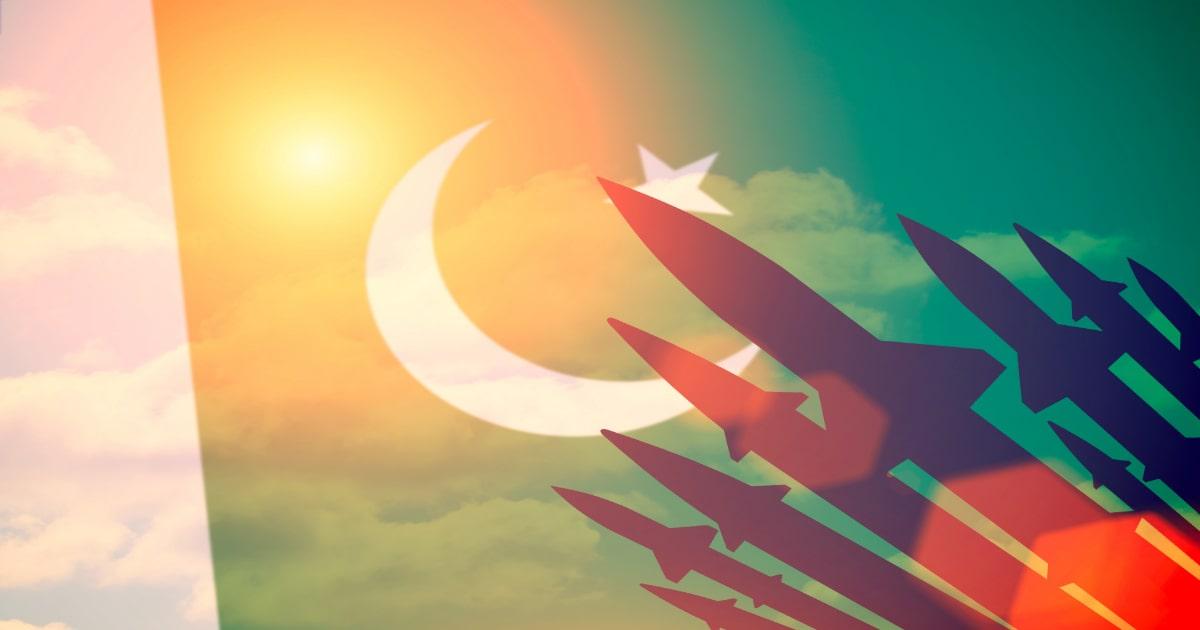
Pakistan developed its nuclear program only in the past couple of decades, with its first major test in Balochistan, 1998. It was mainly spurred on due to the fact its rival and neighbour India had gained a nuclear advantage in the 70s, with the then President promising that they would develop an equally impressive nuclear arsenal even if they had to eat grass to afford it.
The country has approximately 160 nuclear warheads, and it is believed that the missiles are stored separately from the nuclear warheads and would only be assembled if they were intended to be used. To launch a nuclear attack, authorisation by the Prime Minister would be needed, who is the chair of the Nuclear Command Authority, but there is a three-tier structure when it comes to strategic attacks.
As of 2021, Pakistan does not have a nuclear triad, just land and air capabilities, however it has been testing submarine missiles in the last few years and once approved it will become a full triad power to rival India. Only 6 nuclear warhead tests have been carried out by Pakistan.
Land-based: 100 short to medium range missiles with ranging yields of 5KT – 40KT
Air-based: F-16 bombers can carry 24 x 340KT-1.2MT, the Mirage III/V can carry 12 x 12KT
Sea-based: Only has tested the Babur-3 in 2017 from a submerged platform
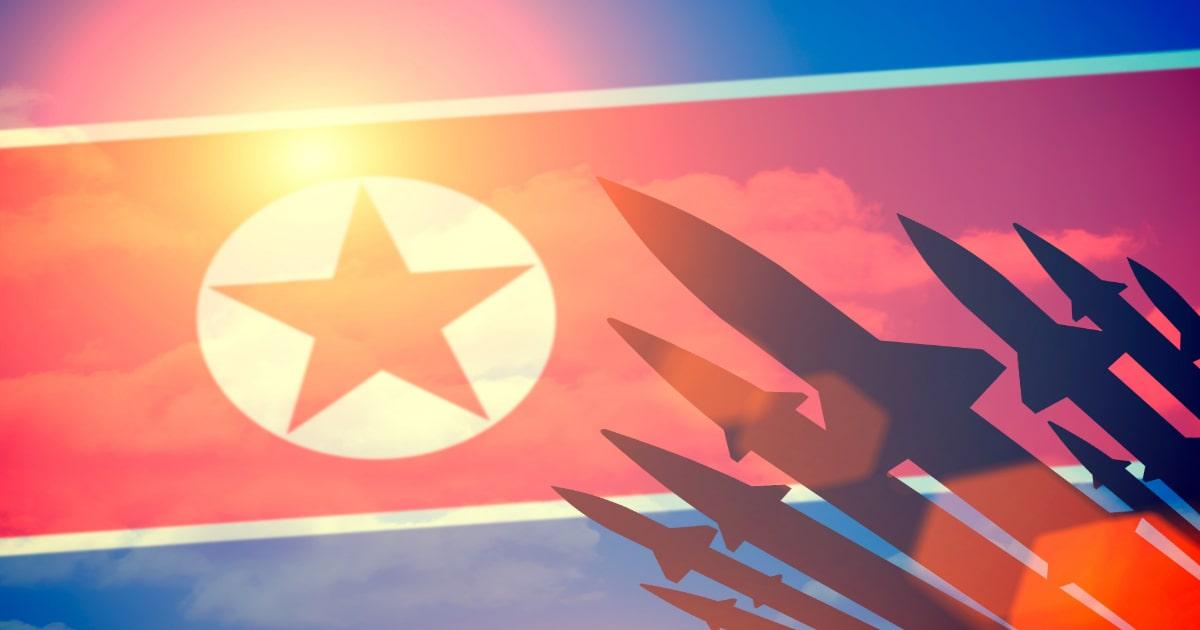
North Korea has only recently become a nuclear power in the last decade, with 6 tests in total of its nuclear arsenal, the first being in Hamgyong in 2006. It is suspected to have around 35-45 nuclear warheads in total, but the actual number is unknown as the nation state is highly secretive in this aspect.
Of all the countries with nuclear warheads, North Korea’s ability to fire a weapon of this magnitude is the most concerning, owing to the dictatorial rule the country is subject to by Kim Jong-un. The international community has been pushing for many years towards the denuclearisation of the Korean peninsula.
It has both plutonium and enriched uranium created from centrifuges north of Pyongyang, enough to build 6 new nuclear warheads each year. North Korea does have both land and sea nuclear defences, but even though the country has a basic air force it has not yet created atomic bomber planes that can be equipped with nuclear missiles.
Land-based: Short and long range ballistic missiles by road and train, up to 250KT tested
Sea-based: Sinpo submarine has launched a KN-11 missile with the potential to carry a 10KT yield

Due to the secrecy and strategic ambiguity put forward by Israel, they have neither admitted or denied possessing nuclear weapons. There are a number of suspected tests carried out by the nation, however there is no direct evidence that these nuclear tests were carried out by Israel.
It is thought that Israel could have up to 80-200 nuclear weapons, but keeping their existence secret may be a preventative measures so that none of the non-nuclear Arab countries which surround it attempt to launch an attack. It is thought that Israel is adopting the ‘Samson’ option, by only using them as a last resort.
If Israel does possess weapons of mass destruction, it’s highly likely they have a nuclear triad of air, land and sea defences. The country could potentially have 50 nuclear warheads to be delivered by land-based ballistic missile, 30 gravity bombs to be dropped by planes, and also submarine launched missiles. The number of warheads and the yield of them is unknown. The good news is that Israel is a strong ally of both the UK and the USA, and France too.
Atomic bombs are not built with a ‘shut-off’ button that could be hacked remotely by the enemy, nor are they installed with the ability to be recalled – once they’ve been launched they are going to hit their target unless intervened.
The fact that hundreds of missiles are likely to be launched in a short space of time makes the task of stopping them all near impossible. Once a nuclear strike has been approved by a country, there are a number of strategies that can be taken by the opposing military forces which can try to stop a nuclear attack.
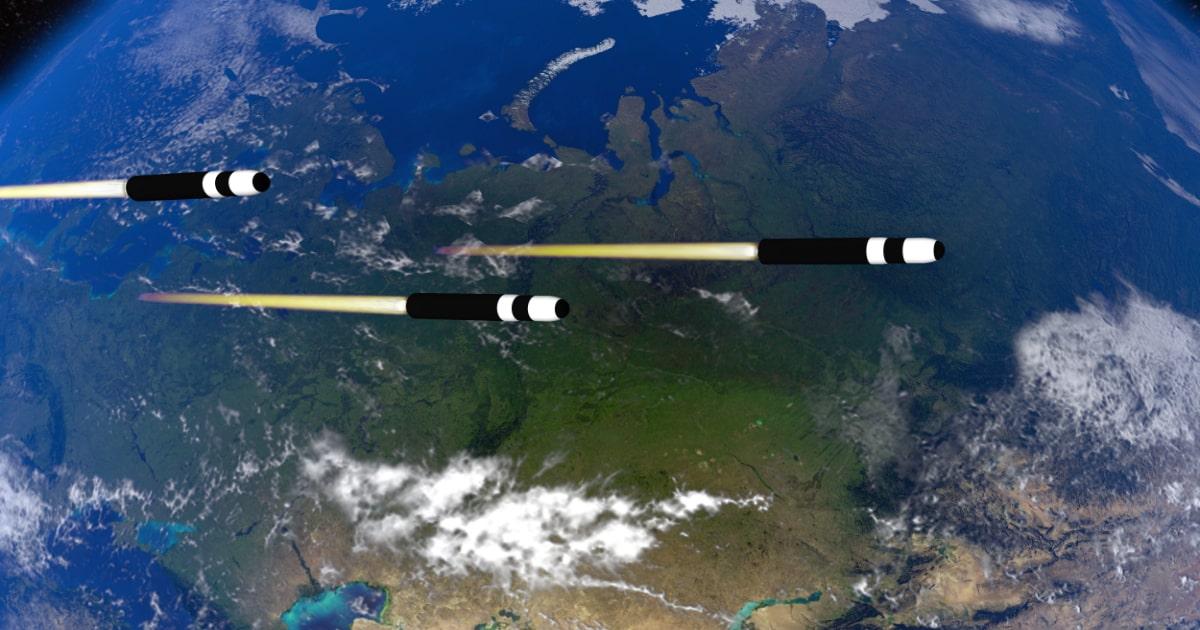 The duration of a nuclear attack depends on factors such as the yield of the warhead, the number of missiles launched, whether it explodes in the air above a city or whether it hits the ground, and even factors such as the weather and wind direction at the time of explosion.
The duration of a nuclear attack depends on factors such as the yield of the warhead, the number of missiles launched, whether it explodes in the air above a city or whether it hits the ground, and even factors such as the weather and wind direction at the time of explosion.
It might be shown on the news that a country has launched a nuclear attack, and how long preppers have before it hits depends on where it was fired from. ICBMs travel fast… very, very fast – hence the name ‘inter-continental ballistic missile’.
They can reach hypersonic speeds of 15,000mph, dropping to 2,000mph as it begins its decent to the impact location. This means it can travel around 5,000 miles in just 20 minutes.
To put that in perspective: Moscow to London is only 1,500 miles, Moscow to New York is 6,700 miles, Beijing to the East coast of America is 6,250 miles, Beijing to Sydney is 5,500 miles and North Korea to the state of Alaska is just 3,700 miles.
Missiles won’t be launched from cities, but countries have missile silos and submarines in diverse places ready to fire. The USA for example has nuclear missiles located abroad in places like Italy, Germany and Belgium so they could attack Russia, Iran, Pakistan or India speedily if needed.
A UK submarine may be in the North Pacific Ocean right now near Hawaii so it can fire a nuke at China quickly in a matter of minutes, and Russian subs may be patrolling the North Atlantic or Caribbean for easy access to American cities on the West coast. Two thirds of the oceans are actually international waters – the high seas – where any country is legally free to roam.
The actual exploding of a thermonuclear bomb takes less than a second as the chain reaction occurs very quickly. The explosion would happen quite fast and be over in less than ten minutes, however the destruction would be wide ranging, blowing window out for miles around and shaking the foundations of buildings.
The nuclear device is also likely to set off a large earthquake, bringing further survival issues for building stability, so prepping for this aspect too is essential.
After the initial bomb had exploded and caused destruction on the city, there would then be a period of fallout which occurs around 10-30 minutes afterwards. This is made up of all the particles that were kicked up into the air when the bomb went off, which then get irradiated and fall back down to earth as radioactive particulates.
It can land on the ground and contaminate everything it touches, and while it is generally accepted that after 48 hours the radiation is 99% gone, it could take up to five weeks before its safe to travel around the area. Some areas can stay contaminated for years, especially if the groundwater, flora and fauna are affected, as they will likely be genetically mutated due to the radiation.
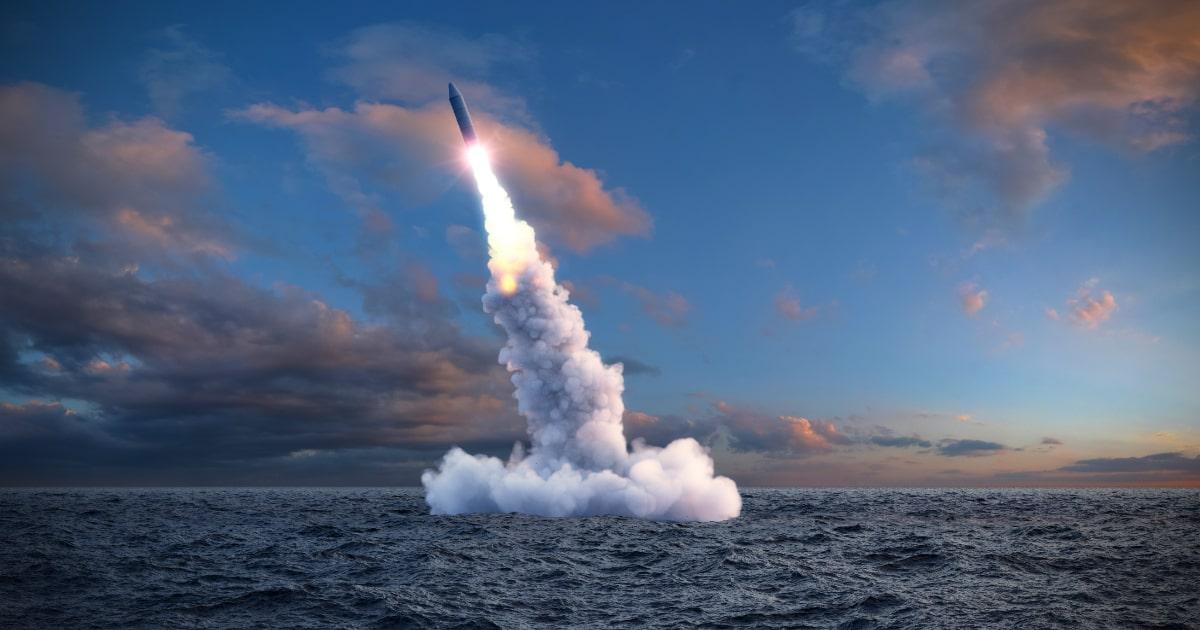
It may seem like the world is always on the brink of nuclear war, with warheads able to be fired within minutes and launch strikes around the world within the space of just one hour. The Doomsday Clock changes every few years and is currently on 100 seconds to midnight, meaning that nuclear war is likely in the near future due to the current political climate and which countries have nuclear weapons.
In this part of the nuclear attack survival guide we’ll take a look at the many ways a nuclear war could start between nations, intentionally or otherwise.
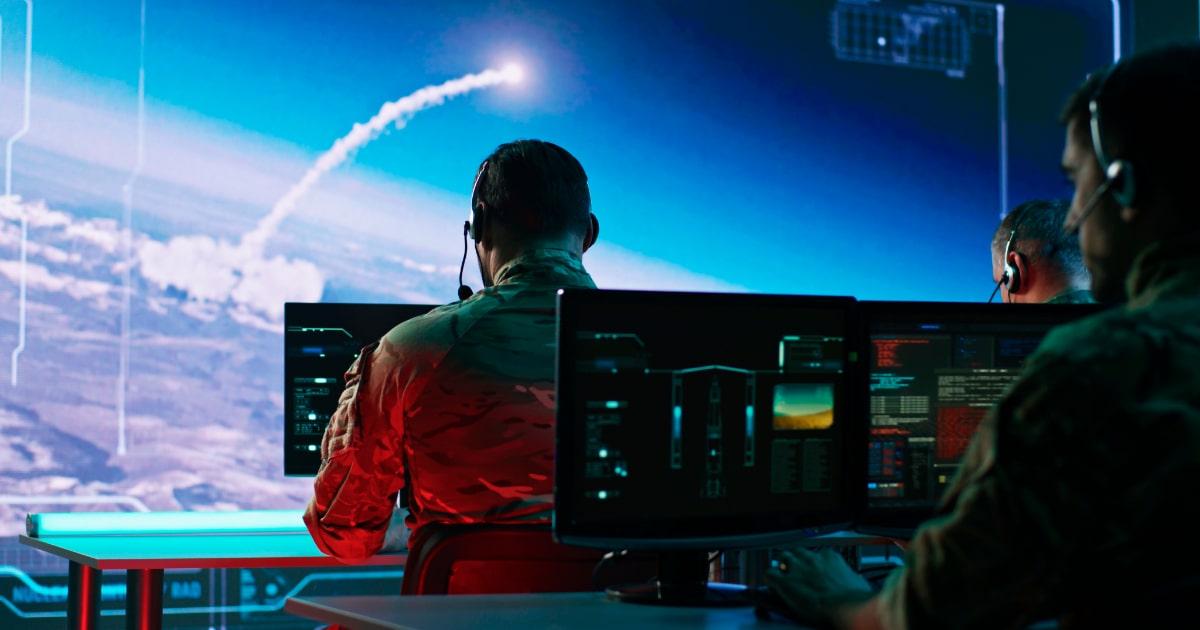
Unfortunately for the Average Joe in Britain or around the world, no nuclear attack warning would likely to be given at all. The military would be in the know as they would see it on radar and take the appropriate steps, but these ballistic missiles fly so fast that it would hit the target city before people could be properly warned.
If we’re lucky there may be a news announcement issued quickly before the strike occurs, or a push text may appear on our smartphones informing us to take cover, just like there was in Hawaii’s false alarm. This kind of survival alert service was recently tested in the UK.
By looking up you may also see a rapidly moving object high up in the air with a white contrail behind it heading in the direction of your nearest large city.
This is quite worrying as it gives preppers very little time to prepare themselves for the initial strike, as they may be at work, at school or out walking the dog when the strike is launched. If as a prepper you have a bunker already set up for this kind of attack through advanced planning and prepping, then getting to it as quickly as possible is your best bet.
If you are quite far away from the nuclear strike, then you would probably see an intense white bright flash of light before you heard the rumbling, felt the ground shake, saw the rising mushroom cloud, or the wind blast hit you. Any extremely bright flash should trigger something in the prepper to get to safety quickly while the rest of the public are still wondering what it was.
On the other hand, if there is a build up to nuclear warfare there are some tell-tale signs preppers should watch out for which may include:
This SHTF situation may come suddenly with no nuclear attack warning, and it may hit the target city in the UK in as little as 20 minutes from being fired by a foreign nation. In this scenario, you’ve got virtually no time to prepare yourself, so knowing how to act fast is imperative and there are a few survival tips to bear in mind.
If you ever see a bright flash in the distance which lights the sky up even during the daytime, it’s essential that you act quickly. You should immediately lay flat down on the floor, face to the ground with your arms over your head if you’re outside, or get inside quickly.
This gives you a good survival chance to avoid the blast wave and any objects that may be flung at high speeds towards you from the blast around 30-60 seconds after the flash.
Never look at the light directly, it can damage your eyes. Even better than just laying down on the ground is to either run inside a building or get behind something substantial such as a wall, or into a ditch to protect you.
It’s not advisable to get behind a car or truck as it has the potential to be moved and hurt you. Stay there until the initial shockwave from the blast passes you and then aim to get into shelter quickly.
Shelter can take many forms, but only a few types of location are going to actually protect you from the blast itself and the fallout afterwards. The kinds of radiation that are emitted from a nuclear explosion can travel through most materials, but the thickness of them can determine how far they will permeate.
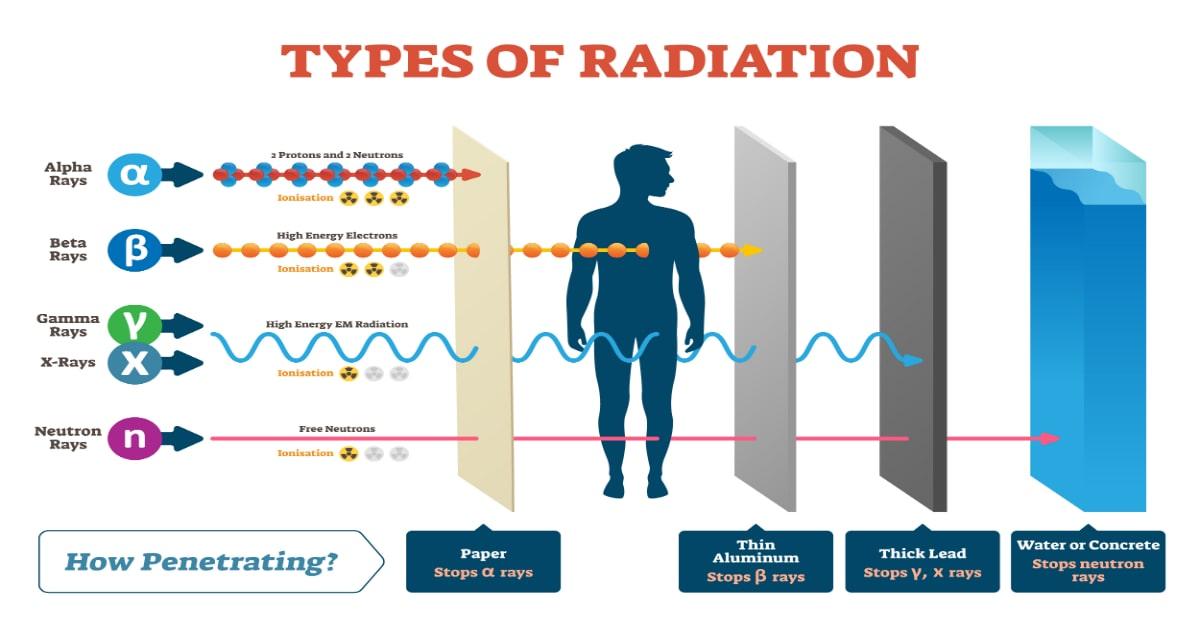
For example, it takes 11 inches of wood to stop gamma radiation, but only 1.2 inches of steel. Concrete, earth, steel and lead are the best materials to stop the radiation from reaching you, so it follows that a reinforced underground base or bunker made of these materials is your best bet.
Failing that, being in the centre of your property on the ground floor, or in the basement of a tall building with multiple stories is where you want to be. When sheltering inside your own home, go to the middle of your property away from any windows and external walls. You want as much solid material between you and the radiation outside as possible.
Factors such as how far you are away from the bomb, if it exploded in the air or on the ground and the weather conditions on the day determine how you will experience a nuclear attack.
It’s not likely that atomic bombs will be dropped in the countryside where there is relatively little population, however enemies may try to strike strategic targets, such as radar stations and nuclear power plants which aren’t located in very populated areas.
There are different parts to a nuclear explosion that affect the area in different radiuses. In the very centre where the explosion occurs there is an intense fireball that turns everything to dust, vaporising everything organic. In this area there is intense radiation also, and anyone contaminated would likely die within just a few days or weeks if they even survived the initial blast.
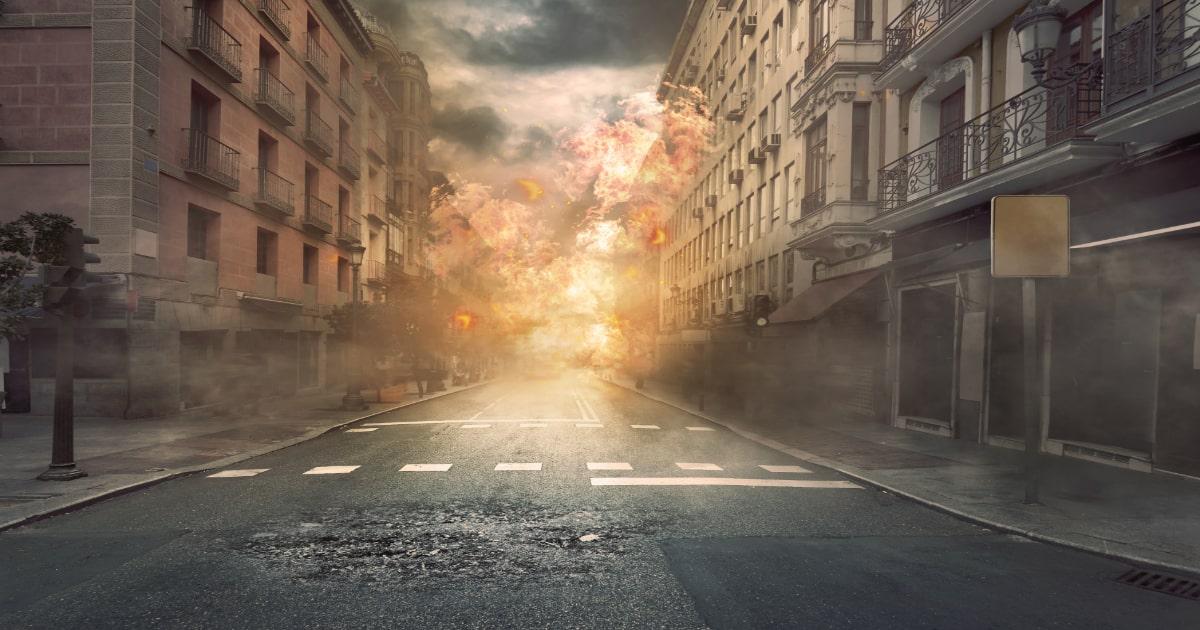
Then there is a blast which ripples outwards with wind speeds faster than a hurricane and can send objects and people flying as well as shattering windows and destabilising buildings causing them to collapse. Fires may start as gas pipelines are disrupted and the fire spreads from building to building, especially in commercial areas.
A much wider radius of thermal radiation goes many miles out from the centre, giving instant third degree burns to anyone who is outside in the way of the blast. A lighter radius of damage comes from the blast and it still has the potential to break window glass over 100 miles from ground zero. This is why you shouldn’t go towards a window after seeing a bright flash outside to check it out.
After the main physical damage has been done, another threat comes around 10-30 minutes later as the radiation fallout begins – much more dangerous if the bomb hit the ground as opposed to an air-burst.
When a thermonuclear bomb explodes on the ground it sucks up all the vaporised material into a huge mushroom cloud where all of the particles then receive radiation, and fall back down to earth like ash or black rain. Fallout can be lethal and is toxic to life forms.
There are multiple hazards associated with a nuclear attack which makes them so deadly, and can make prepping for the eventualities all the more difficult. Some of the major things to be aware of when a nuclear strike hits are:
If you are caught outside after a nuclear attack and small pieces of ash and dust rain down on your body and clothes, or if you are quite close to the centre of the blast but manage to survive, it’s likely you’ll suffer from radiation sickness.
The amount of radiation you’re exposed to is related to how sick you become and the symptoms you develop, and how quickly you develop them.
Radiation sickness is a general term and does not mean just being physically sick, it is a catch-all term for a range of symptoms. Long term effects of exposure are cancerous tumours, infertility, birth defects, low blood cell count and hair loss.
Let’s look at the different types of exposure and the symptoms you can expect, so you can judge how badly you or someone else has been affected.
Mild radiation exposure
Moderate radiation exposure
Severe radiation exposure
Acute radiation syndrome
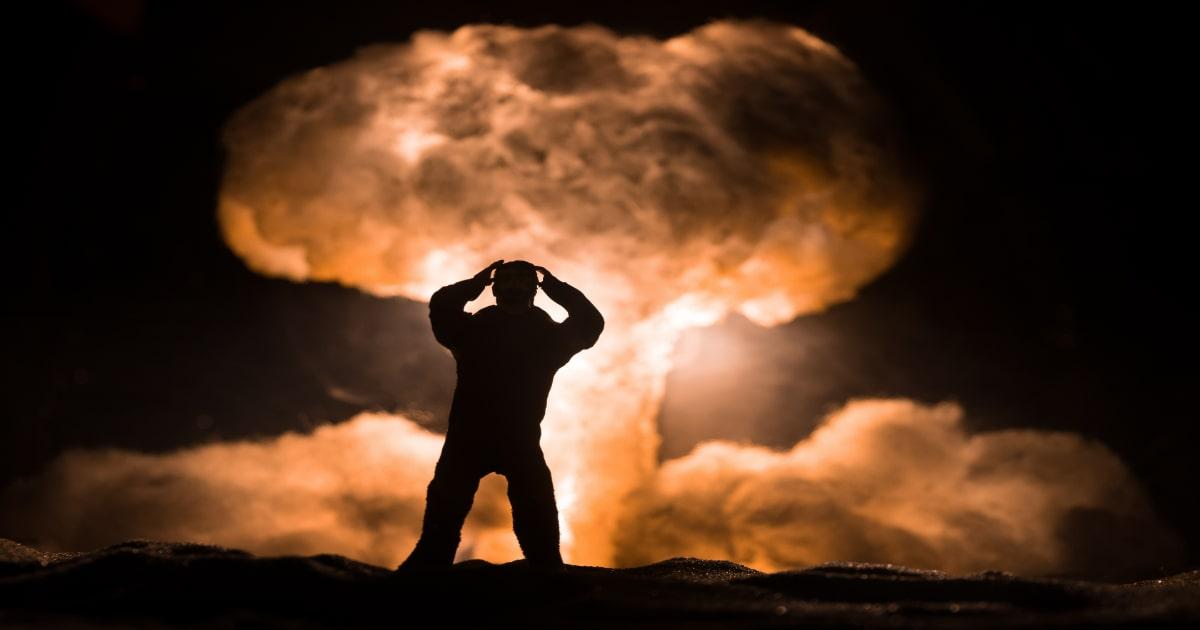
During a nuclear attack there are some things you should definitely not do, so if preppers learn nothing else from this page just remember some of the following survival advice to stay safe.
Just some of the top survival tips for staying safe during a nuclear attack include:
If you’re lucky, you will be in your home or close by when a nuclear attack happens. If you live far away from a major population centre then your chances of being severely affected are reduced. Aside from having a stockpile of food and water, there are a number of other survival tips you can take ahead of time to prepare your home for a nearby nuclear attack.
Curtains – having heavy curtains in place would stop any glass fragments being blown into your home from the blast
Painting your house – painting the exterior of your house white would help to reflect any heat given off by the blast
Apply white paint to the window – not the best tip, as you’ll have other things to worry about, but painting the window panes white will deflect heat and prevent fires
Have a safe place – within your home choose an insulated place to stay for the first day after the attack, away from exterior walls
Insulate – if you have time, push furniture up against the exterior walls such as turning a bed on its side and using the mattress.
Cut down trees – trees could be blown down and crash through your house, leaving you exposed to the fallout which is dropping around you
Remove flammable items – leaves around your property or dead bushes can catch fire which may spread to your home, the same goes for items on your window sills inside
Fire extinguishers – preppers should keep one or two in your home just in case your windows are blown out and the inside of your home catches fire
Gas and electric – turn both of these off at the shut-off valve or mains board if possible to prevent any unwanted fire or explosions
Doors and windows – keep them locked and closed at all times, external and internal, as the pressure waves created can launch items towards your home.
Chimney – block off any fireplaces by stuffing them with a pillows, towels or a duvet to prevent any fallout dust coming into your home
Vents – block or close any vents leading to air exchange between the inside and outside of your property.
While all of the above is great advice for an average family home, there’s nothing better than having a dedicated underground bunker or fallout room to protect you and your family should a nuclear attack hit the UK.
These were common during the war, and many still exist in the UK today, built by concerned families. We’re not saying preppers need a million pound underground doomsday bunker with a twenty-year supply of food and a swimming pool, however preppers can have something in place specially built that doesn’t need to cost the earth.
If you’ve survived the initial blast then a prepper’s next problem is going to be coping with the nuclear fallout which can pose a threat for days and weeks following the blast.
The actual radiation will have reduced to just 1% after 48 hours, however the radioactive particles will have covered the whole area damaging plants, houses, people and animals, so staying inside for as long as possible is imperative.
Creating A Fallout Room
To create an ad-hoc or dedicated fallout room within your own home, preppers should choose an inside space which does not have any walls connected to the outside. This is because the fallout won’t be able to get to you easily, and the more walls or objects the radiation has to pass through makes it much less harmful.
Select a room that is on the ground floor or even better underground, this is because the fallout will land on the roof, street and garden outside. The room should be sealed, preferably not have any windows or air vents. Now that the room is sealed, the walls should be made as thick as possible by using sandbags if you have them, or you can tip a bed on its side and put the mattresses in your home against the wall.
Use anything such as tables, sofa cushions or take other interior doors off their hinges and stand them against the wall to put distance between yourself and the particles outside which are emitting deadly radiation.
Work quickly, as you only have around 30 minutes to do this before the fallout begins to drop outside. If your windows have been broken by the blast, make it a priority to block them completely with sheets of plastic and duct tape, or a mattress.
At the side of the room, at the furthest point from an exterior wall, build a small base with a heavy table or upturned sofa or bed, and pack it round the outside with pillows, books, boxes or anything you can find.
Stay under there for a minimum of 48 hours with your food and water, and remain in the fallout room for two weeks or as long as you can safely manage. Make sure to lock the doors once you are all inside to prevent anyone from breaking in and bringing radioactive fallout with them.
Building An Underground Bunker
The best prepping protection from a nuclear attack is to have a nuclear bunker that is way below ground level. This can be a space in your basement if you have one, but most modern British houses are not equipped with this lower level, so a specially designed and buried survival bunker would be needed.
You can have this under your home or in the garden, but it will cost quite a lot of money even for the most simple design as it requires specialist knowledge and ground excavation. The main aim is to have as much soil, concrete, steel and lead around you in all directions, especially above as the fallout would settle right on top of you if your shelter is underground.
For all its pros there are still lots of cons to consider when thinking about having a bunker, especially if it’s not build correctly, and preppers will need NBC filters to keep the air pure and clean from fallout.
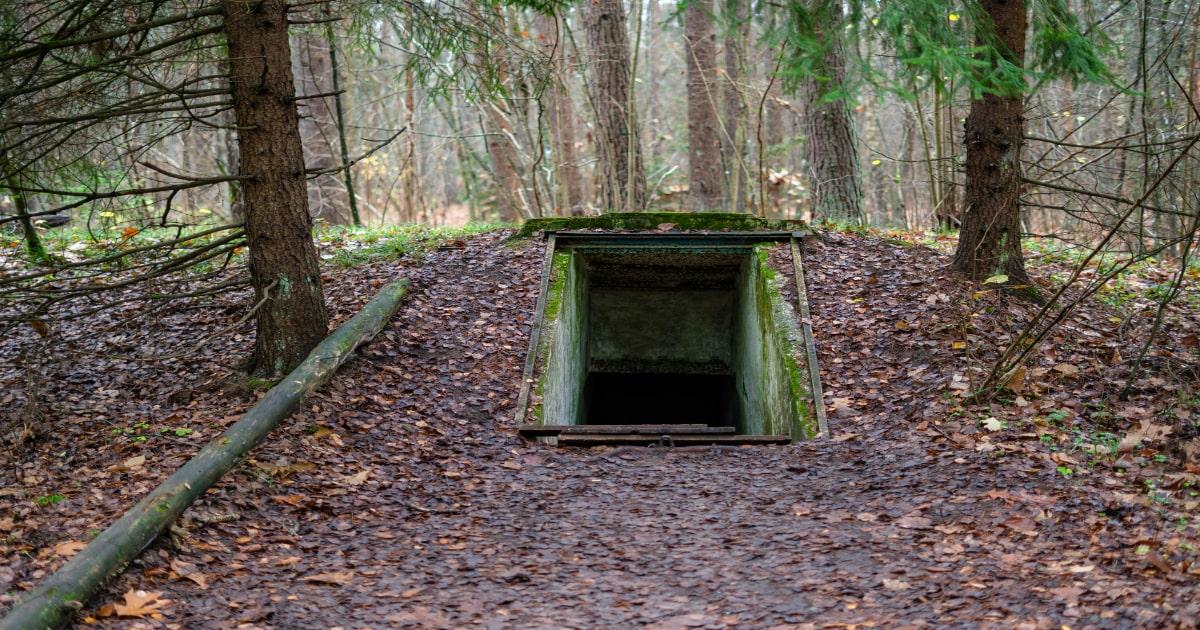
Being outside can already put a prepper at a disadvantage as fallout will be closer to you, it will be on the opening door of the bunker, and trees, cars or other debris could fall or be blown onto your bunker escape hatch. The locking mechanism may even fail and you could be trapped in there indefinitely.
There are a lot of not-so-secret government nuclear bunkers in Britain and companies who are dedicated to building personal survival bunkers if you feel that’s your best bet. Adapting your own home may be more effective and not cost as much money to have something specially built.
It’s a no brainer that preppers should not attempt to bug out anywhere in the wild in the case of an imminent nuclear attack, unless that place is a very short drive to your own secure nuclear fallout shelter.
Being outside after 15 minutes of the attack leaves you open to fallout and radiation seriously affecting you, and as you can imagine the roads will be blocked anyway with non-preppers panicking and not realising that deadly radioactive fallout is on the way within minutes.
During a nuclear attack from a foreign power, the major cities are likely to be in the firing line, however strategic sites such as military bases and nuclear power stations may also become targets.
So where would the safest place in the UK be to survive a nuclear attack? Check out the top ten list below of survival locations, many places here are islands and remote locations where preppers are most likely to avoid the worst of the effects.
Out of the UK, some of the best countries to shelter from a nuclear attack include island based locations such as Iceland, New Zealand, French Polynesia, the Canary Islands, Indonesia and Fiji as well as remote places like Argentina, Greenland, Antarctica and parts of Africa. Having said that, the effects of an all out nuclear war will be felt around the world wherever you are.
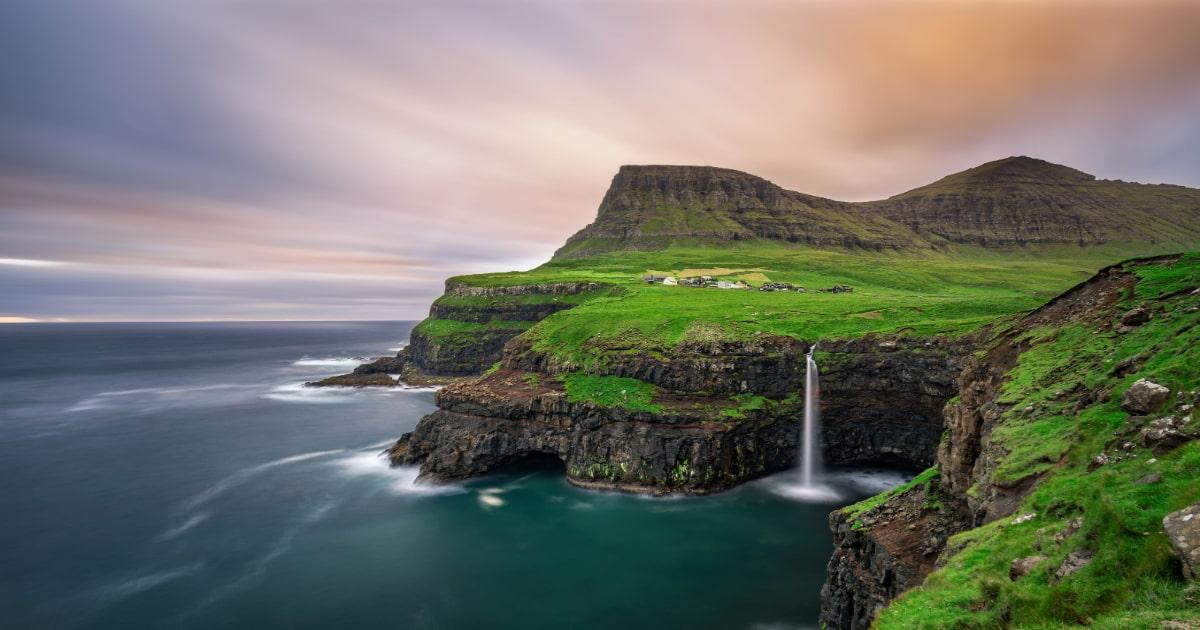
It’s true that there are a many nuclear bunkers in the UK, however it’s highly unlikely that any of them are properly equipped to give the prepper everything they need in terms of safety. A properly equipped nuclear bunker needs the correct air filtration systems and many, if not all, of these bunkers are decades old and dilapidated inside.
That’s even if you can get access to them in the first place with all of your prepping supplies in the time it takes for a nuclear warhead to be dropped. Still, being inside one of these for a couple of days would be better than being in a two-storey house or at the top of an apartment block.
You can guarantee hundreds of other people will have the same idea though, arriving late and covered in radioactive fallout.
In general, there will be a variety of low priority and high priority targets for any enemy attack against the UK, so make a risk assessment from this survival guide of how close you live to the following areas and facilities in order to determine your level of preparedness:
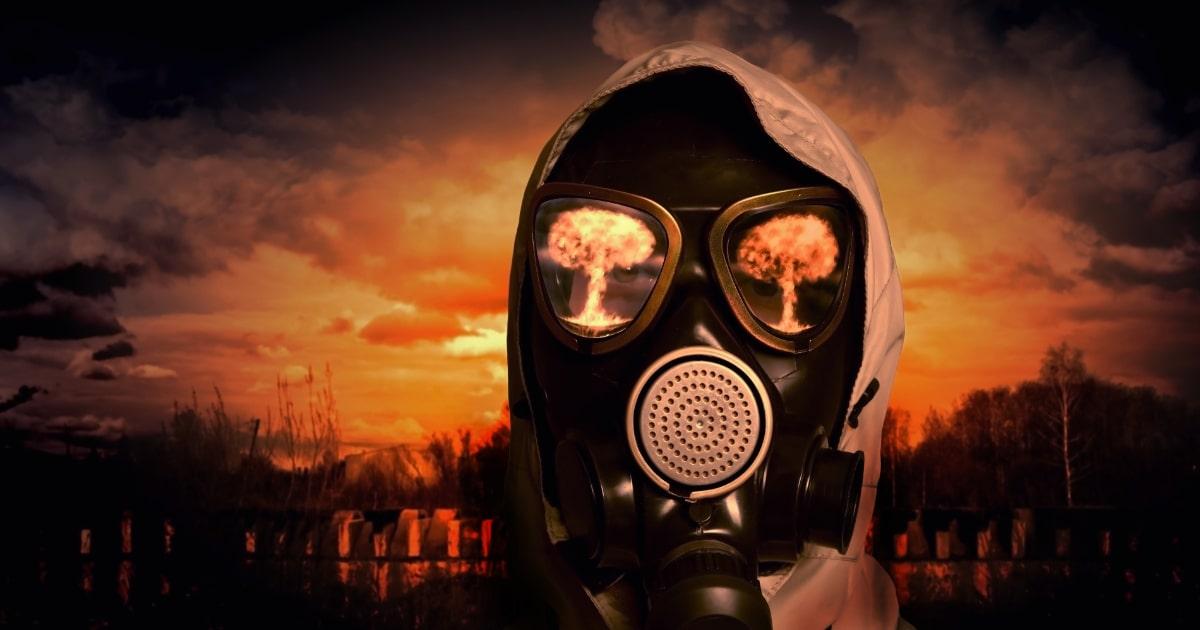
If you’re prepping for a nuclear attack in the UK, then there is a substantial checklist of things preppers should keep in mind when creating their nuclear attack survival kit. This is because you may have to bug into your home without leaving for days and even weeks, and your survival kit may be all you have to survive for a long time.

Depending on the severity and scale of the SHTF nuclear attack, the world may never be the same again. If just one or two bombs were detonated in the UK then there’s a good chance recovery would happen within a decade, however if 50 or more bombs were launched and hit major cities including London, the country would pretty much collapse.
Food supplies are likely to be a major issue as farmland will have been covered in radioactive fallout, and if nuclear power stations were hit then widespread areas would have to be sealed off for decades. The water supply too would be affected, and large lakes and even underground water sources may be tainted.
Day to day life in the aftermath of an atomic bomb would be spent in recovery mode for many years to come, rebuilding cities, housing those whose areas were destroyed, trying to salvage farmland to grow food.
Millions of people will have probably lost their lives, and the massive death toll combined with all the other negative factors affecting the UK at such as time is likely to be enough to send vast swathes of the population into clinical depression.
In the worst case scenario, if hundreds of thermonuclear bombs are dropped around the world it could result in what is known as a ‘nuclear autumn’ or even a ‘nuclear winter’. The burning cities would pump tons of soot and debris high into the atmosphere which circles the globe, blocking out sunlight and causing global temperatures to drop.
Plants and vegetables would struggle to survive under such nuclear winter conditions and the world would become a pretty bleak place to exist. It could last for months or even years.
The Road | 2009
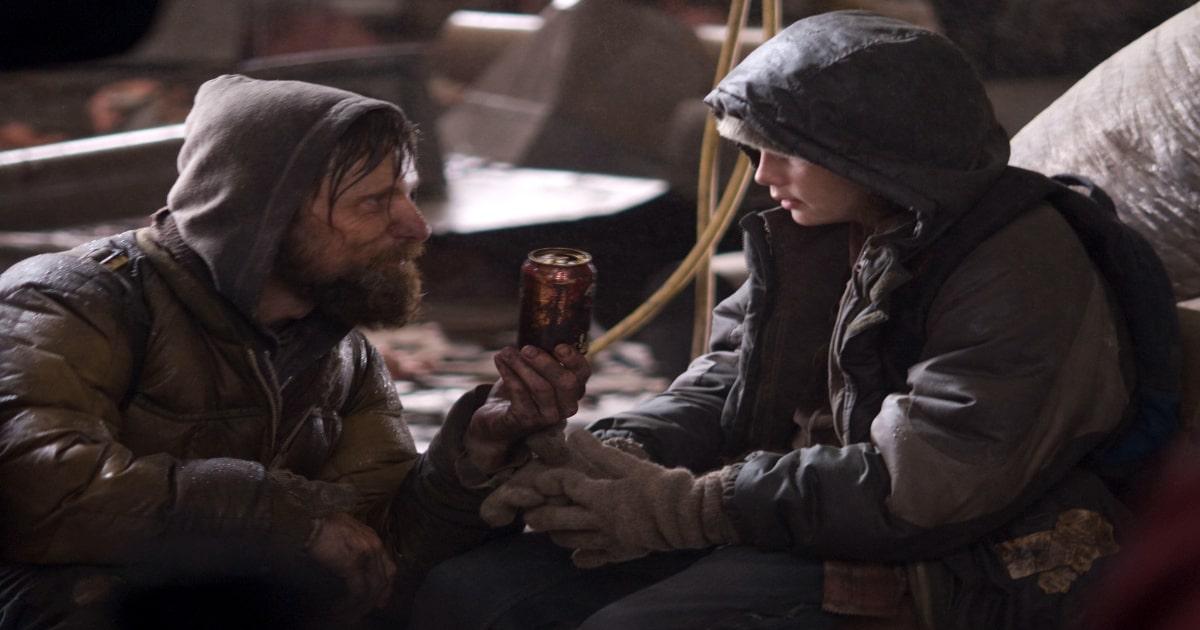
A glimpse of what the world could possibly look like in the aftermath of a major nuclear war which has destroyed the United States, this film features a father and son making their way across the country. They head towards the sea in the hopes of finding an island and have to scavenge whatever they can on their journey. As they advance, they encounter various groups and individuals who have not fared so well and lost the essentials of what makes humanity great.
The Sum Of All Fears | 2002

Originally based on a novel by Tom Clancy, military writer and author of The Hunt For Red October, this film is a true thriller that goes behind the scene of how a nuclear war could quickly escalate between the USA and Russia. Featuring famous Hollywood faces such as Ben Affleck and Morgan Freeman, the storyline follows a CIA agent who must race against the clock to stop a nuclear bomb planted by neo-Nazis from exploding at a football match.
Thirteen Days | 2000

Giving an insightful glimpse inside a nuclear dilemma from the perspective of the White House, Thirteen Days documents the events of October, 1962 when the Cuban Missile Crisis took place. Millions of people around the world were on tenterhooks waiting the decisions made concerning America and Russia standing off against each other that could have gone very badly and led to an all out nuclear war between the world’s two largest nuclear powers.
Threads | 1984
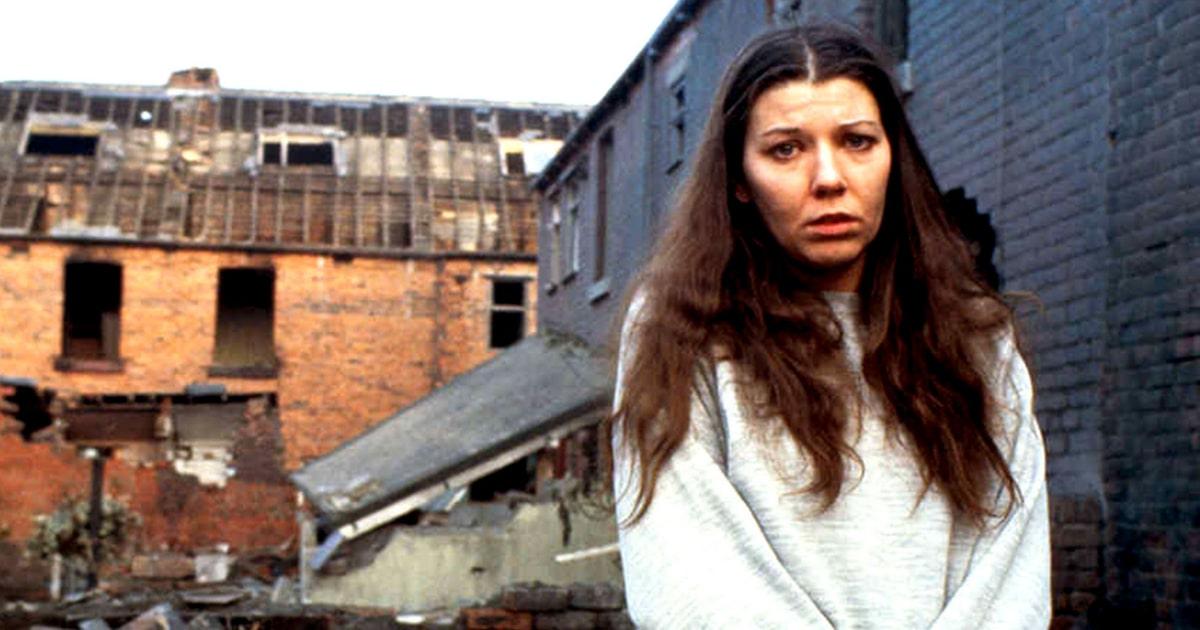
If you’ve ever wondered what it would look like if a Russian nuke hit Sheffield then this is the movie for you! Perhaps the most graphic and realistic portrayal of a nuclear attack in the UK and the people who are affected in the aftermath, Threads follows the lives of citizens and how they cope with the attack. A couple is separated in the chaos and have to find the basic necessities for life as radioactive fallout drops around them. A film that shows the true horrors of a nuclear exchange between nations.
The Day After | 1983
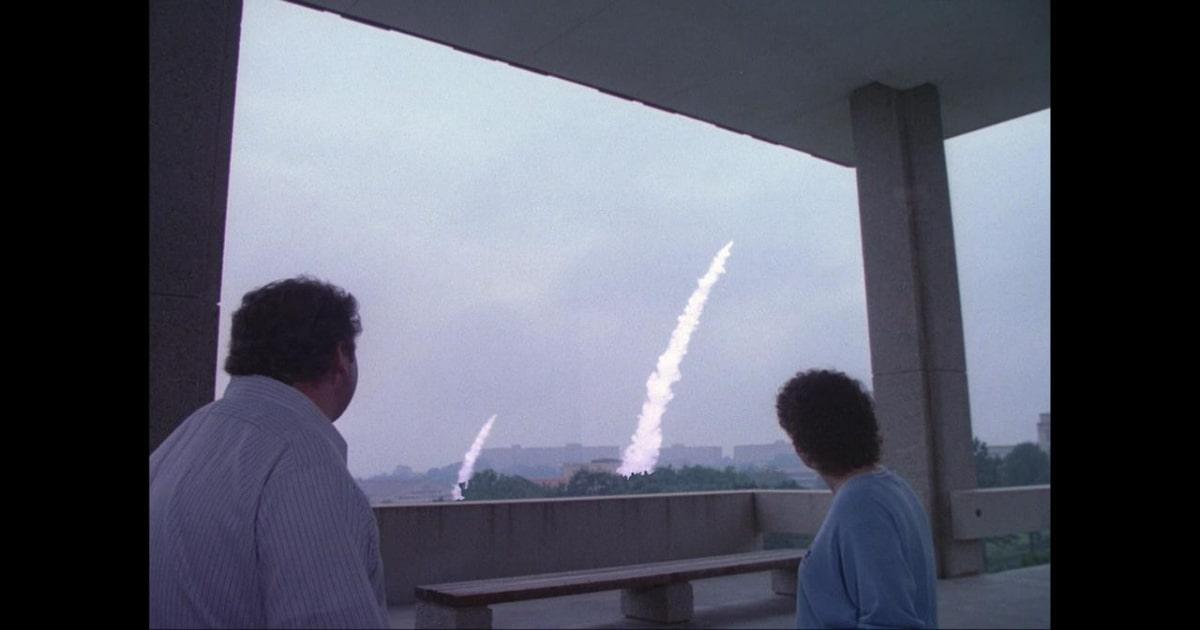
A film from the 80s showing just what could happen if there was ever a nuclear weapons exchange. It documents ordinary citizens going about their day to day lives in Kansas, and follows various individuals such as a doctor and a university student. Little do they know that their calm day is about to be turned upside down thanks to a nuke courtesy of Russia, and the film documents in classic 80s style CGI the effects this attack has on the population.




British Prepper is dedicated to bringing you the most useful information on a wide variety of prepper, survivalist and bushcraft related topics. We really hope that a major SHTF situation never strikes the United Kingdom, but as the old saying goes, failing to prepare is preparing to fail - so always be prepared!




